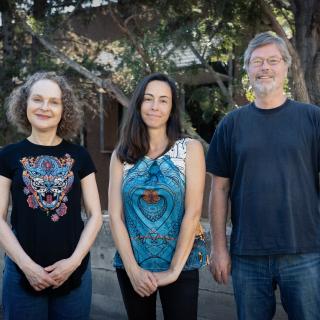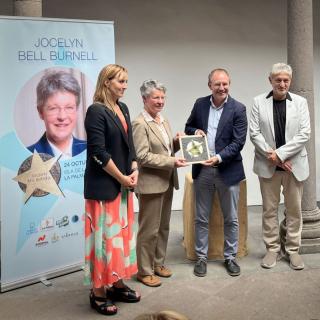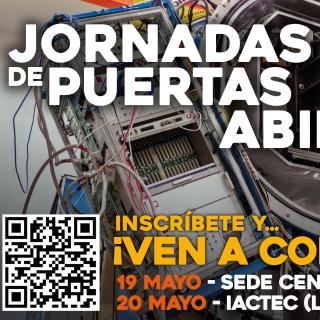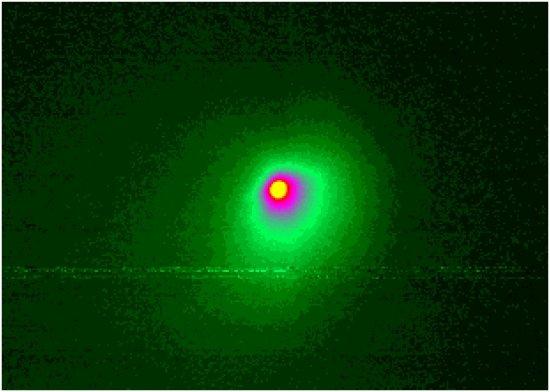It may interest you
-
 El Instituto de Astrofísica de Canarias (IAC) sigue afianzando su liderazgo investigador y de atracción de talento científico con el programa “ Investigadores Visitantes” de Fundación Occident. En este recién terminado año 2024, el programa cumple una década ininterrumpida de trabajo atrayendo a decenas de personas investigadoras cada año que han realizado estancias, de mínimo un mes y hasta tres meses, en el IAC. El programa permite que el personal investigador invitado comparta espacio y trabajo con miembros de los distintos grupos de investigación establecidos en el IAC, de forma que elAdvertised on
El Instituto de Astrofísica de Canarias (IAC) sigue afianzando su liderazgo investigador y de atracción de talento científico con el programa “ Investigadores Visitantes” de Fundación Occident. En este recién terminado año 2024, el programa cumple una década ininterrumpida de trabajo atrayendo a decenas de personas investigadoras cada año que han realizado estancias, de mínimo un mes y hasta tres meses, en el IAC. El programa permite que el personal investigador invitado comparta espacio y trabajo con miembros de los distintos grupos de investigación establecidos en el IAC, de forma que elAdvertised on -
 La reconocida astrofísica Jocelyn Bell ha sido reconocida con la quinta estrella del Paseo de la Ciencia de Santa Cruz de La Palma, reconociendo su labor en defensa de la igualdad y los descubrimientos realizados. Un reconocimiento que ha sido simbólicamente entregado por el presidente del Cabildo de La Palma, Sergio Rodríguez, en un acto en el que ha participado la subdirectora del Instituto de Astrofísica de Canarias (IAC), Eva Villaver y el director del Festival Starmus, Garik Israelian. La subdirectora del IAC agradeció a Bell el trabajo científico realizado en toda su carrera yAdvertised on
La reconocida astrofísica Jocelyn Bell ha sido reconocida con la quinta estrella del Paseo de la Ciencia de Santa Cruz de La Palma, reconociendo su labor en defensa de la igualdad y los descubrimientos realizados. Un reconocimiento que ha sido simbólicamente entregado por el presidente del Cabildo de La Palma, Sergio Rodríguez, en un acto en el que ha participado la subdirectora del Instituto de Astrofísica de Canarias (IAC), Eva Villaver y el director del Festival Starmus, Garik Israelian. La subdirectora del IAC agradeció a Bell el trabajo científico realizado en toda su carrera yAdvertised on -
 The headquarters of the Instituto de Astrofísica de Canarias (IAC) and its technological headquarters, IACTEC, open their doors to the public at their Open Days as part of Open Government Week 2025. This initiative, promoted by the Open Government Partnership worldwide, seeks to bring public administrations closer to citizens and promote the values of transparency, integrity, participation and accountability. The event at the IAC headquarters will take place on Monday 19 May, while the IACTEC will open its doors on Tuesday 20 May. Both days will be held in person, with two visiting hoursAdvertised on
The headquarters of the Instituto de Astrofísica de Canarias (IAC) and its technological headquarters, IACTEC, open their doors to the public at their Open Days as part of Open Government Week 2025. This initiative, promoted by the Open Government Partnership worldwide, seeks to bring public administrations closer to citizens and promote the values of transparency, integrity, participation and accountability. The event at the IAC headquarters will take place on Monday 19 May, while the IACTEC will open its doors on Tuesday 20 May. Both days will be held in person, with two visiting hoursAdvertised on
